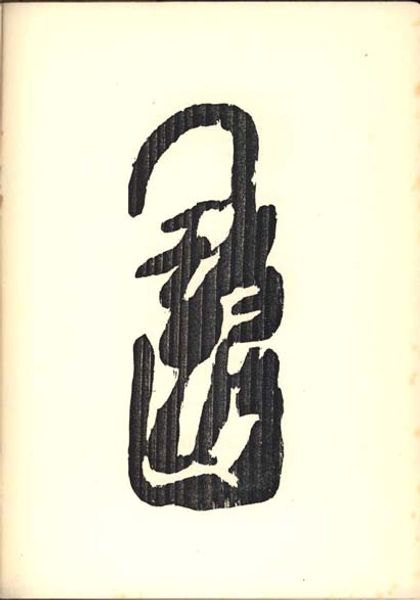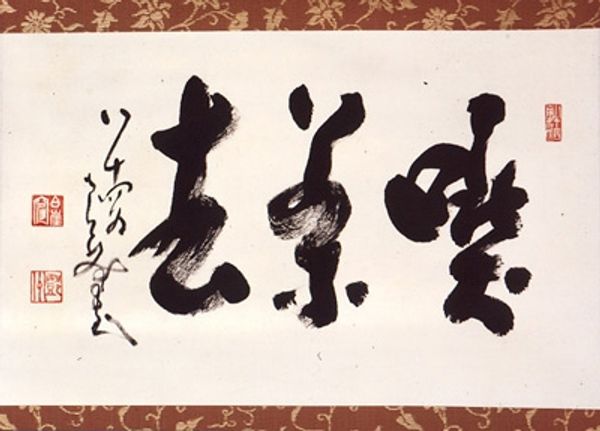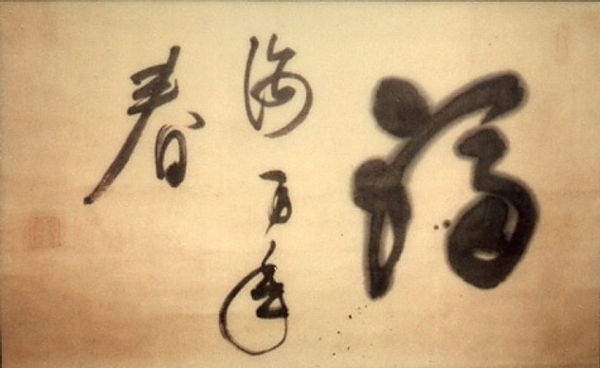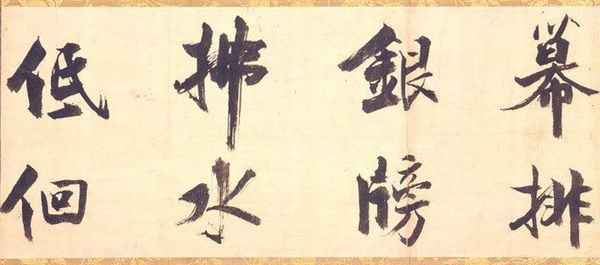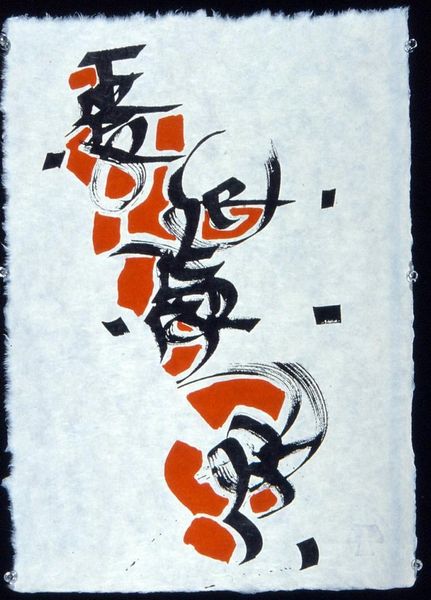
Copyright: Public domain US
Curator: Here we have Jean Arp’s "Illustration for Tristan Tzara's 'Vingt-cinq poèmes'," created in 1918. It's an ink drawing, intended for a collection of Dadaist poetry. Editor: My first impression is that this is strangely organic, like an accumulation of cells viewed under a microscope. It simultaneously attracts and repels. Curator: That’s interesting. Arp was known for his biomorphic forms, and this illustration, rendered with bold, gestural lines, reflects the Dadaist embrace of chance and spontaneity, but within a framework reflecting burgeoning science. How do you see it relating to the socio-political context of the time? Editor: World War I was raging, societal norms were collapsing, and here is this intense little image. This image encapsulates the era's skepticism towards established systems. It mirrors the angst, but there’s also something quietly assertive in its simplicity. I keep thinking about a fetus inside the womb and how that must have felt back then...frightening. Curator: It is jarring when viewed through that particular lens. Considering the Dada movement’s rejection of reason and embrace of the absurd, this illustration served as a visual counterpart to Tzara's unconventional poetry, a total revolt against academic artistic traditions of the pre-war period. But there’s also that sense of re-invention. Editor: Right. Re-invention fueled by destruction and disillusionment. It suggests a turning away from the familiar and embraces the unintelligible as resistance. Is this meant to make sense in any conventional way or is Arp trying to reveal to us a deeper subconscious feeling of unrest that has no definite form? Curator: Well, in light of the avant-garde's broader project, one could say that it critiques established representational modes. By creating something abstract, yet alluding to natural forms, Arp seems to challenge our perception, doesn’t it? Editor: Definitely. In that moment in history, breaking form represented progress, or at least change... the potential for some sort of evolution. Seeing it now, it’s a powerful emblem of an era in transition. Curator: A visceral and visual representation of a world being rebuilt, wouldn’t you say? Editor: Yes. Its initial repulsion seems transformed, and reveals an unexpected resilience. It marks its territory against a world on the brink.
Comments
No comments
Be the first to comment and join the conversation on the ultimate creative platform.
